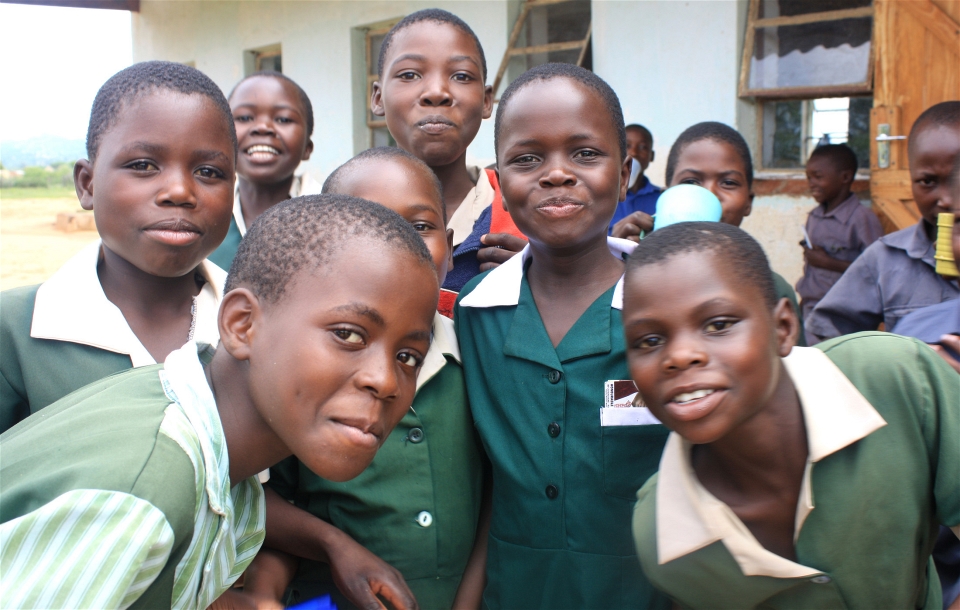Peak Youth: Preparing Now for an Aging Planet
The majority of countries around the world are graying, due to the so-called demographic dividend: Improved educational attainment and economic empowerment are lowering birthrates, and individuals are living longer, healthier lives.
As a result, we may soon reach “peak youth,” wherein the number and proportion of young people in the world are as high as they will ever be. Without investment in their futures, these young people could be burdens to society rather than assets, warns a new report from the UN Population Fund (UNFPA).
There are currently 1.8 billion humans ages 10 to 24, but those numbers are expected to drop as more countries benefit from the demographic dividend. Only six countries, five of which are in sub-Saharan Africa, are “youthening” rather than aging, but even these countries are expected to reverse the trend by 2020.
For societies to benefit from the demographic dividend, young people need opportunities to thrive; this means not just creating jobs for them, but also improving education and health, especially for girls, the report urges.
The time to make these investments in youth is now, UNFPA report editor Richard Kollodge told IRIN News: “Eventually a very young population will become a very old population, and you have to plan for that too. Unless steps are taken right now, then the opportunity for a demographic dividend will be squandered.”
Sources: IRIN News; State of World Population 2014 (UNFPA).
Signals: aging, birthrates, development, education, health, population, youth

Schoolchildren in Zimbabwe are members of what may be the global “peak youth” generation. As opportunities for education and economic development increase, birthrates will decline. Photograph © Jaspreet Kindra/IRIN
Fish Forecasting: New Methods for Monitoring Marine Life
The cold waters off Peru and Chile are richly productive, yielding between 5% and 10% of the world’s fish. Researchers are now learning more about why this ecosystem, known as the Humboldt Current, is so productive, aiming to predict the impacts of environmental disturbances on these waters’ productivity.
Life in the Humboldt Current is nourished by the constant upwelling of more nutrient-rich waters from the deep, according to researchers from the Institute of Research for Development (IRD) in France. Using high-resolution sensors, they have modeled the circulation of oxygen content in these churning waters, monitoring how variations in the intensity of seasonal, low-oxygen currents from the equator affect the Humboldt’s ecosystem.
With additional modeling work, these studies will help improve forecasts of the health of important fish resources, particularly anchovy stocks.
Bioluminescence—the flashes of light generated by tiny marine organisms such as dinoflagellates—offers another unique tool for monitoring fish stocks, believes Dr. Charlotte Marcinko of Britain’s National Oceanography Centre. When fish move through the seas, the churning water disturbs the dinoflagellates and triggers the chemical reactions producing the telltale glow.
Modeling changes in the seasonal abundance of the bioluminescent organisms may better inform researchers monitoring the size and movements of fish populations.
Sources: Institut de Recherche pour le Développement (IRD) and National Oceanography Centre.
Signals: ecosystems, fish, models, oceans, resources

Dr. Charlotte Marcinko of Britain’s National Oceanography Centre demonstrates bioluminescent organisms. Inset: bioluminescent dinoflagellates. Images courtesy of National Oceanography Centre.
Book Note: The Rise and Fall of Intelligence
Defense Department historian Michael Warner’s timely book The Rise and Fall of Intelligence: An International Security History (Georgetown University Press, 2014) offers an academic but accessible overview of a topic naturally veiled in secrecy and cloaked in misconceptions. The author eschews sensationalism, unlike the still-trending reactions to reactions to the so-called #TortureReport recently released by the Senate Select Committee on Intelligence (Executive Summary: PDF).
In fact, the details and findings of the SSCI report ought not to be a surprise, as the CIA inspector general’s own review of the “enhanced interrogation program,” which occurred at about the same time that the Abu Ghraib prisoner abuse scandal broke, was stomach-turning (and policy-questioning) in its own right: “Not a few American officials believed the legal rationale for those techniques could not be defended,” Warner writes.
Historically, what Warner refers to as the rise of intelligence is the long-term professionalizing of the endeavors of states to … to advance or protect their own interests—vital for preventing wars or winning them efficiently.
Now, the Information Revolution has generated vastly more intelligence and more entities anxious to use or abuse it, while overwhelming analysts. “The digital revolution compounded the [analysis] problem many times over,” Warner writes. Today, we are seeing the fall of intelligence and perhaps the end of secrets.
Adapted from Foresight SIGNALS Blog. Read the review. Purchase the book.
Signals: governance, information, intelligence, security, torture, war, world affairs

The Rise and Fall of Intelligence: An International Security History by Michael Warner. Washington, DC: Georgetown University Press. 2014. 406 pages. $44.96 hardcover.
Signals from the Foresight Community
Association of Professional Futurists: Nominations for Most Significant Futures Work for 2015 are open until January 31, 2015. The awards recognize the work of foresight professionals and others engaged in advancing our understanding of the future. The work may be text (e.g., books, dissertations, reports) or digital (Web sites, games, videos, software), produced between 2010 and the end of 2014. Winners will be announced at the APF Annual Reception in San Francisco on Saturday, July 25, 2015. Details: APF (Signal via Andy Hines)
International Society for Information Studies: Call for papers—”The Global Brain and the Future Information Society,” part of the IS4IS 2015 Summit Vienna to be held at the Vienna University of Technology, June 3-7, 2015. Featuring keynote speaker Francis Heylighen, director of the Global Brain Institute, the track aims to cover the multifaceted impacts of information technology on society. One-page abstracts with links and references should be submitted by February 15, 2015, through the conference submission page. Details: IS4IS 2015 Summit Vienna (Signal via Francis Heylighen)
Club of Amsterdam: The Future Now Show is a monthly video series exploring current affairs and the visions they inspire, and sparking discussions for strategies to shape the future. Recent webisodes have covered changing universities, political transition in the Middle East and North Africa, 3-D printing and medicine, climate change and food, and more. Tune in: The Future Now Show (Signal via Felix Bopp)
Gordon Report: Despite an encouraging figure of 5.8% unemployment in the United States, all is not well for either job seekers or employers, according to the December 2014 issue of Imperial Consulting Corporation’s monthly newsletter. The official unemployment figure does not include individuals working part time but hoping for full-time jobs with benefits, nor those who have become too discouraged to continue seeking work. Meanwhile, employers are struggling to find workers with the high-level skills they need. This is a problem that employers may need to address more aggressively themselves by investing in training. Learn more or subscribe: Gordon Report (Signal via Edward Gordon)

